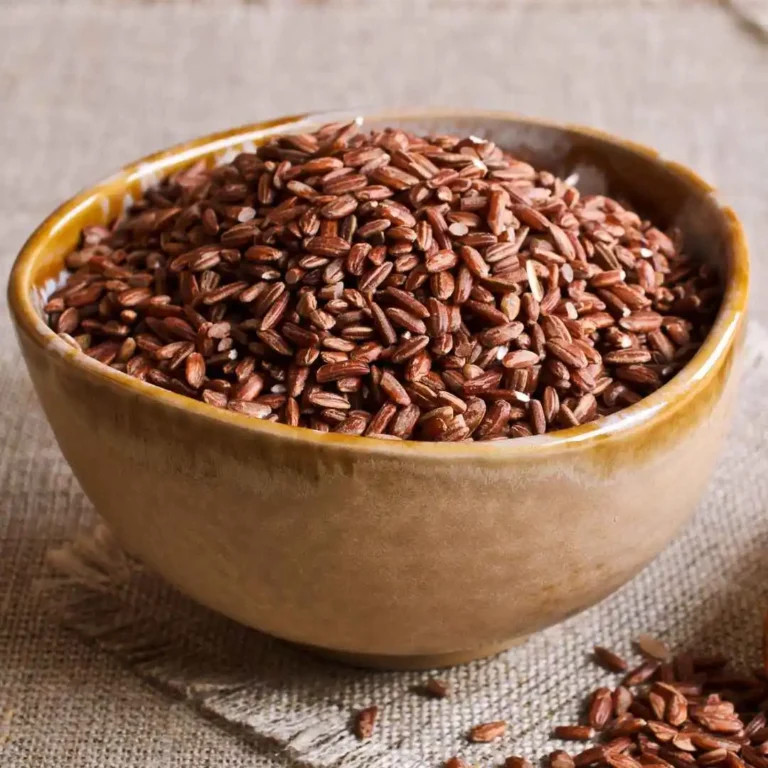All About Brown Rice: History, Nutritious Value, Varieties & Cooking Tips
Rice is considered a staple in over 100 cultures, and there are more than 40,000 rice varieties available in the market today. Out of these rice varieties, several are prepared and sold as this rice. So, whether you want to lead a fit lifestyle or just curious about this whole grain, here is everything you should know about brown rice.

What is Brown Rice?
Rice is a type of grain that is grown and harvested all around the world, with different variants grown in different regions. To put it simply, that rice is a whole grain that is less processed and preserves its bran and germ layers, unlike white rice. Moreover, it is widely known as a healthy option because of its higher nutritional value and fibre content. The outer layer of the grain offers vitamins, minerals, fibres, and antioxidants, while the germ layer has healthy fats and essential nutrients.
When you think about the history of brown rice, it was first cultivated in China more than 10,000 years ago. After that, it was spread across other areas of Asia and eventually made its way to America and Europe. Today, This rice is a staple food in various cuisines and is enjoyed by people all around the world.
What Does Brown Rice Taste Like?
Brown rice typically tastes slightly different than white rice. It has an intense, nuttier, and earthy flavour compared to white rice. The rice also has a chewy texture when cooked, as well-cooked rice is not meant to be crunchy.
Moreover, a few people don’t like the taste of this rice as they are familiar with the taste of white rice. But if you will give it a try, you will surely learn to appreciate this whole grain instead of overly processed white grains.
Besides, there are various ways to add more flavour to your brown rice to make it taste better. For instance, instead of adding water, you can cook the rice in broth. Add some butter, salt, and pepper after cooking. You can also serve the rice with a savoury recipe that goes well with rice, covering the grains.
Nutrition Values of Brown Rice
This rice is labelled as a nutritional powerhouse packed with a variety of essential nutrients. To make it more clear, check out the vital nutritional values of cooked brown rice (per 100 grams):
Fibre: This rice is well-packed with dietary fibre, improving digestion and easing bowel movements. Moreover, it has about 1.8 grams of fibre per serving.
Calories: It has somewhat low calories, with about 111 calories per serving. It is a perfect option for people who want to maintain their calorie intake.
Vitamins and Minerals: This rice is an excellent source of vitamins and minerals like niacin, phosphorus, magnesium, thiamin, and vitamin B6. In fact, all these nutrients are essential for maintaining overall good health.
Carbohydrates: This rice is a perfect source of complex carbohydrates, offering sustained energy and boosting satiety. Besides, a serving of brown rice has about 23 grams of carbohydrates.
Fat: It is effectively fat-free, making it a heart-healthy option for those watching their fat intake.
Protein: Though not as high in protein as some other grains, this rice still adds a considerable amount. It has about 2.6 grams of protein per serving.
Brown Rice Varieties Available
There are several varieties of This rice available in the market. Here are some of the most common varieties:
Long Grain: It is the widely popular rice variety which has a firm texture.
Short Grain: It is the softest and stickiest rice variety.
Jasmine: This rice has its origins in Thailand. It is an extremely fragrant and well-textured rice compared to other types.
Basmati: It is a long grain originally cultivated in India. This rice has a nuttier flavour and fluffy texture compared to other rice varieties.
Minute or Instant : This kind of rice is partially pre-cooked and then dehydrated, which makes it easy to cook. Due to its processing method, this rice has fewer calories, carbs, and protein. It is also softer and has less flavour compared to other rice varieties.
How to Cook Brown Rice?
All in all, Rice is definitely a staple in different households and a prominent ingredient in various cuisines, all for a good reason. Certainly, it is one of the most vital and nutritious crops that feeds over half of the world’s population. Eating Rice every day is surely not bad for your health, only if it’s eaten in the right quantity with a balanced diet. Excessiveness of everything is bad, even something that’s originally good for your health.
- Rinse the rice in a good mesh strainer. By doing so, you can remove any dirt or debris that may be on the grain.
- Put the that rice and water in a medium pan. Bring it to a boil over high heat.
- After boiling, reduce the heat to low and cover the pan with a well-fitted lid.
- Sim the water for about 18-19 minutes.
- Remove the pan from the head and let it stay well-covered for 5 minutes. It will allow the rice to absorb all the water and become tender and fluffier fully.
- Fluff the grain with a fork and serve as required.
Can You Eat Brown Rice Daily?
There is no direct answer to this question, as there is no one-size-fits-all. The amount of rice you should consume depends on multiple aspects, such as age, activity level, and overall health. Although, on average, adults should try to consume 3-5 servings per week. Besides, if you want to increase your intake, it’s best to start eating this rice instead of white rice. You can further add it to stews and soups for an extra enhancement of nutritional value.
FAQs
Ans: Brown rice is more nutritious than white rice. Due to this, it reduces blood sugar levels and helps in weight management.
Ans: Yes, most people can eat brown rice daily as it is good for health. However, it is not advised for people with iron and zinc deficiencies.
Ans: Brown rice is considered the best rice to eat daily.
Ans: Yes, this rice is sugar free.
Ans: 100 grams of brown rice has 111 calories.
Ans: Brown rice can be eaten with various dishes like curries, stir fry vegetables and meat.
Conclusion
All in all, brown is certainly a healthy and versatile grain that is paired with various dishes. It is fibre- and nutrient-rich and has a lower glycemic index compared to white rice, which makes it an excellent choice for people with health issues like diabetes. Furthermore, this rice is considered more filling than white rice as it can help you maintain a good weight.



